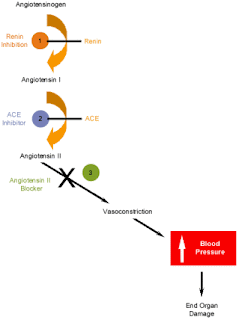
I heard a great talk today detailing possible changes in store for the national policy for kidney transplant allocation, as set forward by the Organ Procurement and Transplanation Network (OPTN) (the organization which helps administer UNOS).
The current allocation system uses a "points" system which is based largely on waiting time: potential recipients on the list get one point for every year since they are listed. Points are also given for high senstitivity (4 points for having a PRA >80%) or for having a good match (2 points for a 0 DR antigen mismatch, 1 point for a 1 DR antigen mismatch). A limited subset of individuals is allowed to "leapfrog" ahead of others in the list: those with a 0/6 antigen mismatch, those who have donated a kidney previously, or patients <18>
While this system has had some success, there have nonetheless been criticisms aimed at this policy. One of the major criticisms is that there are frequent instances of mismatch in graft/patient survival--that is, a young individual being given an older kidney (and therefore requiring a second transplant later on down the line) or an old individual being given a younger kidney (and therefore having a high risk of dying with a functional kidney, resulting in several years of "wasted" kidney function).
Another key criticism of the existing policy is that the SCD/ECD dichotomy is probably too simplistic. Some ECD kidneys are actually pretty good, and occasionally one will get turned down for use. Therefore there has been an increased effort to improve the rating system for potential donor kidneys.
The new proposal--which is still being debated and has not actually been formally put forward as a "proposal" per se--significantly deviates from the "point system" in place. It would be based on the following three ratings:
1. Donor Profile Index (DPI): this is the new rating system used to rank the quality of potential donor kidneys. Instead of classifying the kidney as SCD or ECD, a variety of variables (age, weight, creatinine, etc.) goes into creating a DPI score. Lower DPI scores indicate a better kidney.
2. Life Years from Transplant (LYFT): this measures the difference between expected lifespan WITH a kidney transplant compared to expected lifespan WITHOUT a kidney transplant. Not surprisingly, young patients tend to have a higher LFYT than, for example, older diabetics.
3. Dialysis Time (DT): there is still a component of waiting time which goes into the algorithm--which appeals to a sense of fairness--but the time begins accruing once a patient begins dialysis, as opposed to when one is listed for a transplant. I think this subtle change is to help eliminate variabilities in health care access (e.g., richer, more educated patients tend to be listed earlier for transplants).
These three variables combine to create a "Kidney Allocation Score" (KAS) which determines who is matched first. Overall, the proposed scheme would allegedly lead to better matching of younger donor kidneys with younger recipients (and older donor kidneys with older recipients). The main criticism of this plan thus far is that it would appear to benefit younger patients and disadvantage older patients.
Obviously, the proposal does not get around the central problem of transplant nephrology, which is that the organ demand far outweighs the supply. However, efforts like this to make the organ allocation as efficient as possible (while remaining just and fair) appear to be a good approach to reality.
More details about the proposed policy changes can be found at the
OPTN website.
 The Nobel Prize was first awarded in 1895. A number of awards have been given to individuals whose research is inseparable from the field of Nephrology. Here are a few of the notable examples:
The Nobel Prize was first awarded in 1895. A number of awards have been given to individuals whose research is inseparable from the field of Nephrology. Here are a few of the notable examples:

























.jpg)













